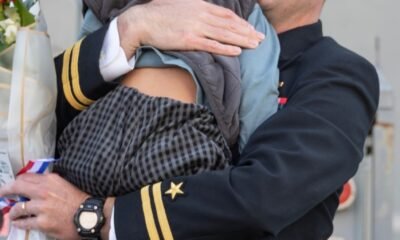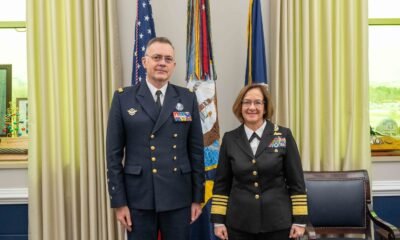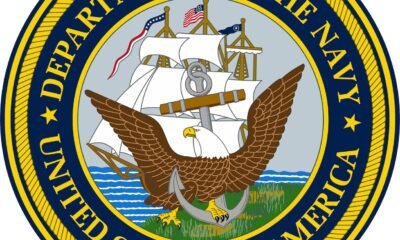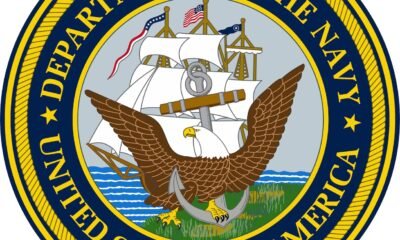Aircraft Carriers
Carrier Air Wing Five’s Triumphant Return: Forging the Future Aboard USS George Washington
The USS George Washington’s flight deck buzzed with anticipation as an F-35C Lightning II Strike Fighter approached for landing. The aircraft, from Strike Fighter Squadron 147, marked a significant milestone by becoming the first forward-deployed F-35C to land on the carrier, highlighting a new era for Carrier Air Wing 5 and its host vessel. Brightly dressed Sailors stood ready, symbolizing the start of unprecedented naval aviation operations in the Indo-Pacific.
As the advanced fighter closed in on its target, the crew showcased razor-sharp focus, underscoring the Navy’s commitment to safe air warfare operations. The ongoing integration of various air wing squadrons points to the Navy’s strategic mission of sustaining freedom and stability in the region. This operation marks the first time since 2015 that CVW-5 has joined forces with the George Washington, this time strengthened with the cutting-edge F-35C, renowned for its foldable wingtip sections and robust landing gear.
In addition to the new aircraft, veterans such as the E/A-18G Growler and F/A-18E/F Super Hornet continue to play vital roles in the fleet’s strike capabilities. The George Washington recently welcomed back three Super Hornet squadrons, each reaffirming their crucial role within the naval operations.
The approach of the “Lightning” sparked a choreographed flurry on deck as the F-35C’s tailhook engaged an arresting wire, co-signaling an intensive new chapter in flight operations. “The F-35 brings brand new capabilities to the air wing,” remarked Capt. Patrick Corrigan, Commander of CVW-5, alluding to the aircraft’s stealth and sensor fusion advantages that enhance overall lethality.
The air wing’s vigor further benefits from enhancements in its E-2D Hawkeye units, known for their long-range threat detection and added air refueling capabilities. Alongside the strike fighters, the air wing’s logistical operations saw the inclusion of the innovative CMV-22B Osprey, revolutionizing carrier missions without the conventional reliance on catapults or arresting wires.
Flight deck crew dynamics adapted effortlessly as Lt. Cmdr. Franklin Santiago coordinated the Osprey’s operations. The intense sound of its tri-rotor mechanics echoed across the ship as this advanced craft demonstrated seamless vertical takeoff and landing capabilities, previously unseen in its predecessor, the C-2 Greyhound.
Operations wound down with helicopters safely reaching deck. The MH-60S Seahawk and MH-60R, both essential for defense and rescue, completed their maneuvers with exceptional precision. As engines and rotors quieted, this dynamic day concluded successfully for the George Washington and its dedicated Team Badman.
“Permanently forward deployed to the Indo-Pacific, Team Badman stands out for its advanced state of readiness,” stated Corrigan. “As we shift to the air wing of the future, maintaining our robust capabilities remains essential in this dynamic region.”



















